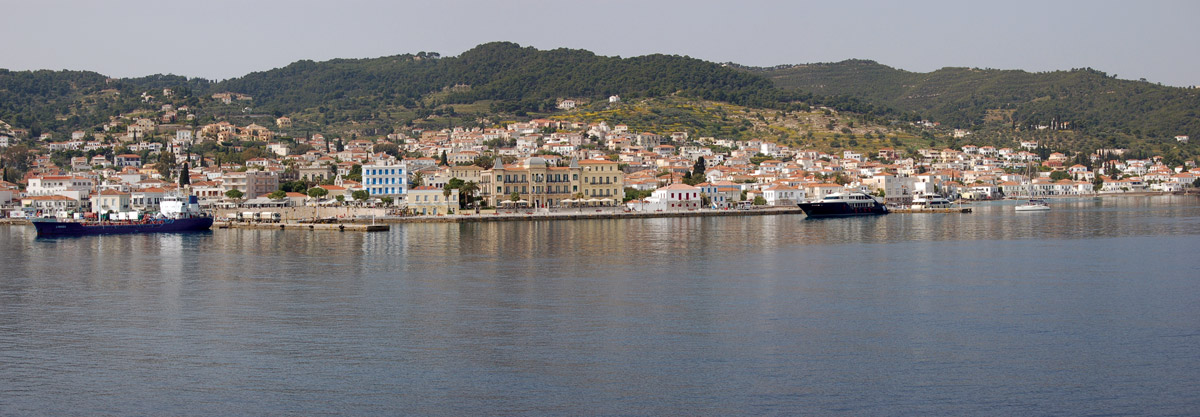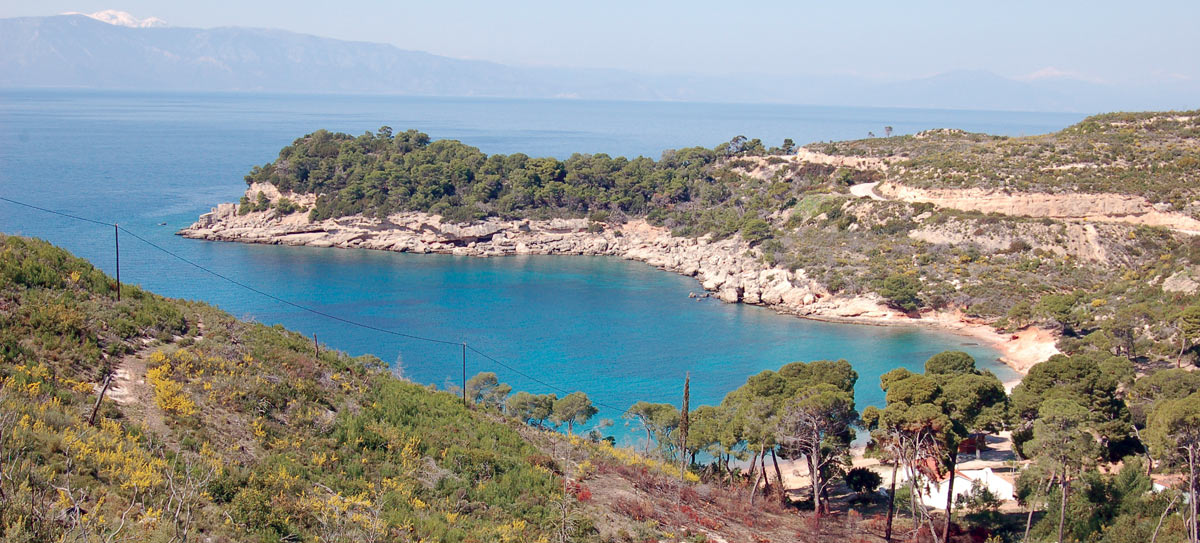
The island of Spétses was not an island up until 8000 BC.! The sea level up until the Mesolithic Era was much lower than today, and as a result Spétses ws connected with the Peloponnese via a narrow stretch of land (to be exact, all the islands of the wider Argolic gulf, due to the geographical changes brought by the coming and going of the Ice Ages, were either completely to the bottom of the sea or land joined with the Peloponnese. Archaeologists have found fossils of mussels and other types of shellfish in the surrounding mountains, up to 300m high!).
As reported by the ancients geographers Strávon (1st century BC.) and Pafsanías (2nd century AD), the island was named Pityoúsa due to the many pine trees growing on the island (pityoús = pine tree forest). Today’s name Spétses derived as a paraphrase of the ancient one over the years. In Medieval times, the island was known as Pétsa, the Venetians named it Spétsa and after the Hellenic Wars of Independence (1821), the name was hellenised to Spétsai.
Already from the Bronze Age (around 2300 BC.), Spétses had a significant fleet, a strong commerce with the neighbouring cities and 3 harbours (Agía Marína, Agía Paraskeví and Zogeriá). Excavations revealed Mycenean settlements close to water wells, in Agía Marína and Ágioi Anárgyroi. At large, the ancient history of Spétses follows the history of Peloponnese.
At the end of the Roman Age (2nd – 3rd century AD), Peloponnese was suffering by barbarical raids which however left Spétses alone, maybe because it was an island. As a result, in the 4th century Spétses are referred to as one of the three largest cities of Argolída, together with Árgos and Ermióni. Unfortunately, the immunity against the raids did not last and the Vándals (464 AD) and the Slavs (587 and 623 AD) found them. In the 8th century AD, the island was almost completely uninhabited.
In the 13th century it passes over to the hands of the Venetians, after a great sea victory over the Byzantines – Genoese, just outside the islet of Spetsopoúla (ancient name “Aristerá”, meaning left in greek, probably because it lies to the left of Spétses when seen from the Peloponnese and it was too insignificant an island for the ancients to give it a proper name). Ever since, the conquerors of the island alternate one after another between Turks, Catalans, Franks and Venetians, whereas the inhabitants reduce slowly but steadily. Those of them who escape the piratic axe, concentrate on the naturally fortified hill that today goes under the name of Kastélli.

In 1714, when the Turks conquered Náfplio and drove away the Venetians once and for all, many Christian Albanians – defenders of the Náfplio, came and settled on the island. The Turks, fearing the return of the Venetians, finally gave some privileges and freedoms to the island, so that they inhabitants won’t have a reason to rebel. From that point on, Spétses started to flourish again, its navy growing and its commerce strengthening.
However, there is no privilege that will make the need of a human for freedom to go away. So, the island took part in the orlofiká, the revolution of 1774. The rebellion was rudimentary designed and treacherously executed, as the Russians made a deal with the Turks, without involving the Greeks, and withdrew their army and navy. The Turks destroyed the harbour of Spétses and the fortified city of Kastélli, and the islanders fled to Kythera to save themselves. The neighbouring island of Ýdra refused to take part to the Revolution of 1774 and a lot of Spetsians believe that the revolution failed because of that – that was the beginning of the feud between the two islands.
In the (finally successful) Hellenic Wars of Independence of 1821, the participation of Spétses was of immense importance. One of the very first to take up arms (unlike their neighbours from Ýdra who needed some …time to think about it), they fought in all the initial significant battles: Náfplio, Monemvasiá, Tripolitsá. Their strong navy and their seasoned captains, fired by their love of freedom and country, help on all fronts.
And the most illustrative example of that is Laskarína Bouboulína, the Spetsian captain and sole woman Admiral in the history of Hellas (the title was given to her after her death). With origins from Ýdra, she was born inside the prisons of Constantinople, when her mother ws visiting her dying father, imprisoned for his participation in the orlofiká. She married and became widow 2 times, had 7 kids and made the best possible use of her husbands fortune. She built ships, she trained and armed crews (as if she knew…), only to give everything to the cause. But everything! Today, when we spend 10 minutes arguing and 20 complaining about the amount we tipped our table of luxury, it is impossible to grasp how one person may sacrifice everything, her fortune, her sons, her life itself, in order to help others so that they may one day be free.
She died ignominiously and tragically, as her life was at the end. During the second civil war between islanders and mainlanders (1825), whilst general Kolokotrónis and other leaders were imprisoned and Bouboulína, impoverished, was exiled in her own island by the Kountouriótis administration, her son Giórgos Giannoúzas kidnaps the daughter of Xristódoulos Koútsis, Efgenía. The kids were in love but the family of Koútsis did not want this marriage. Laskarína goes to the house of her son, to see what is going on, and soon after the family of Koútsis arrives, to take their daughter back. In the argument that followed, somebody (still unknown) shot Laskarína Bouboulína on the head and she died instantly.





